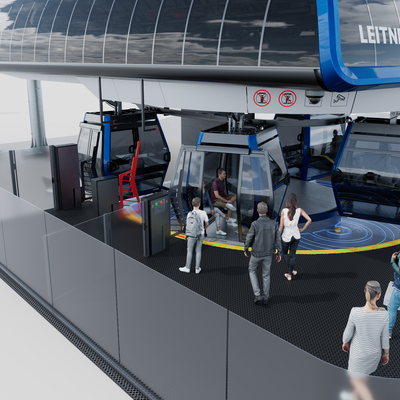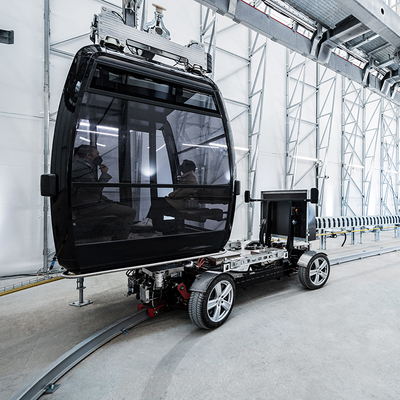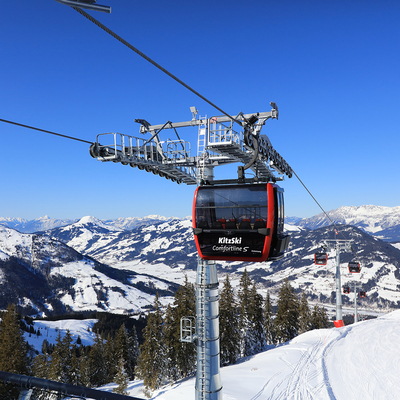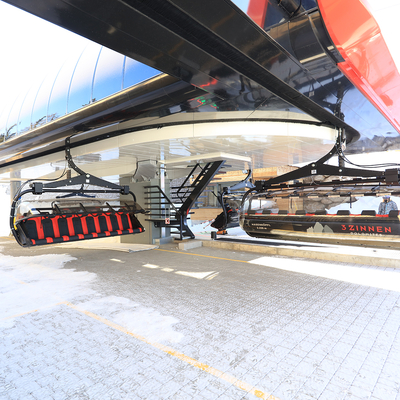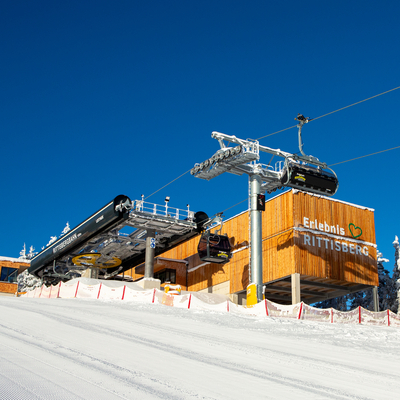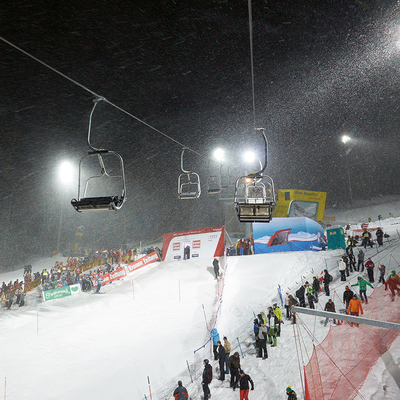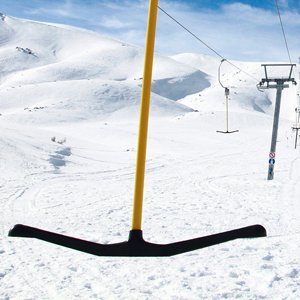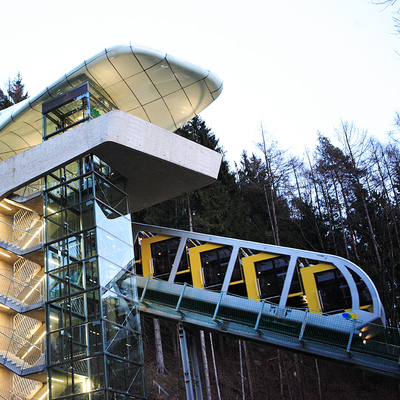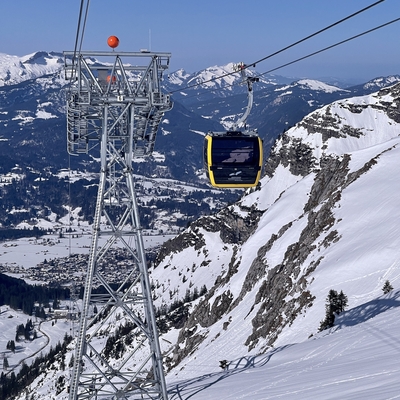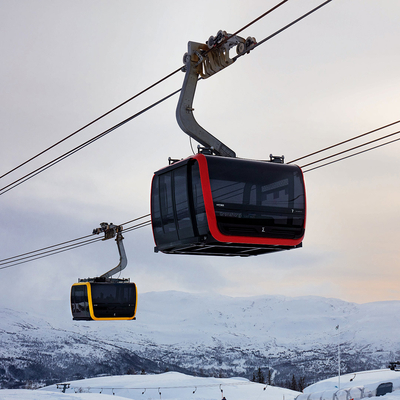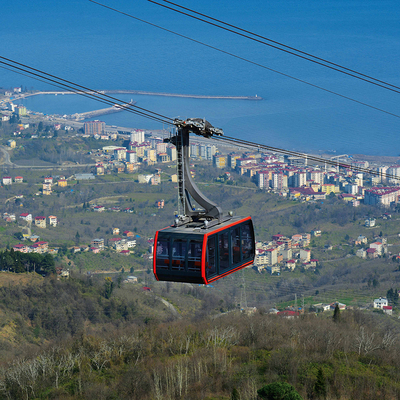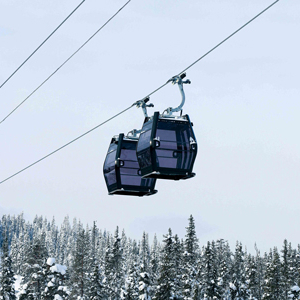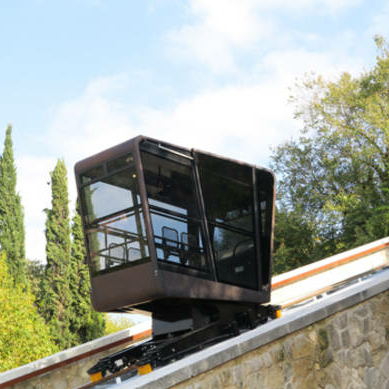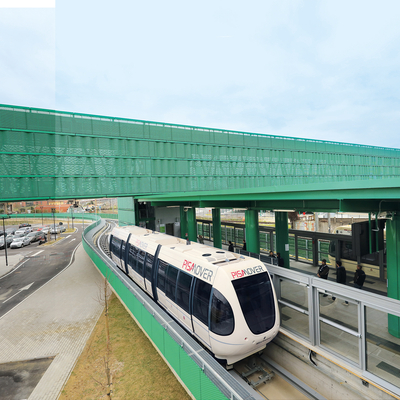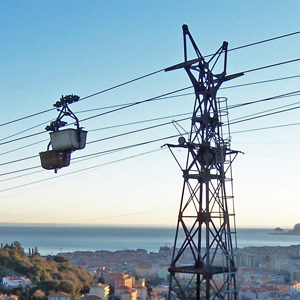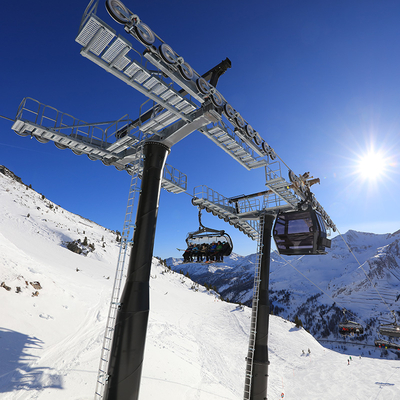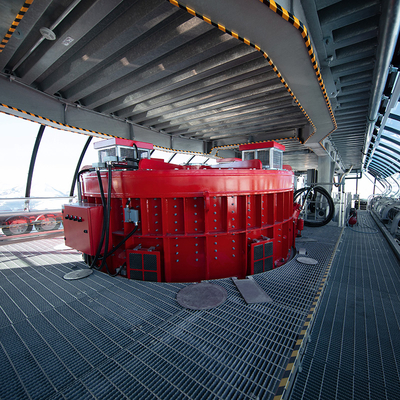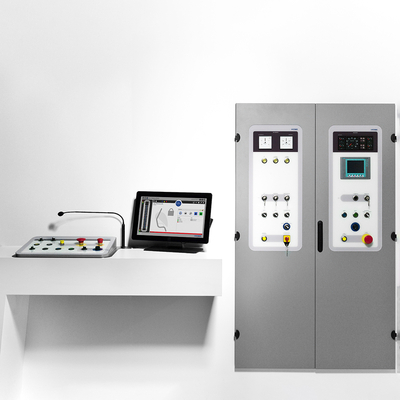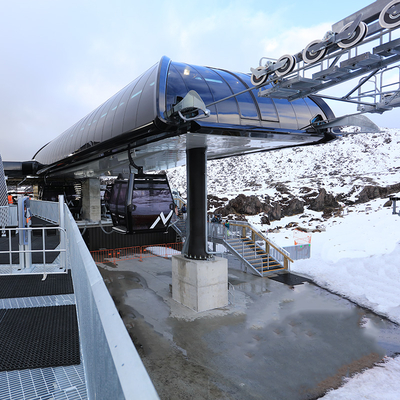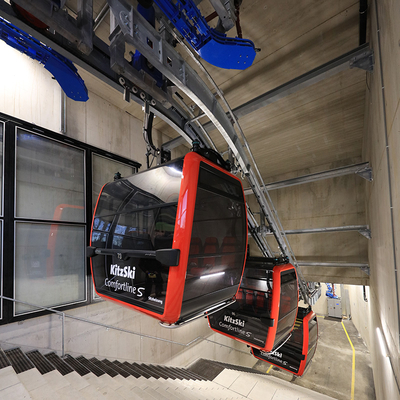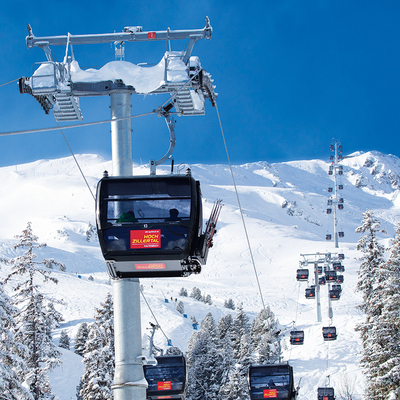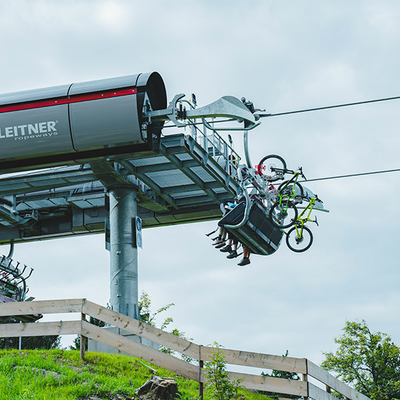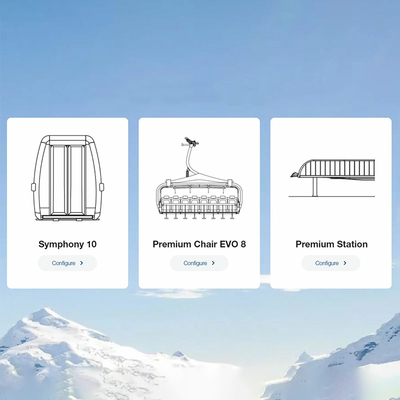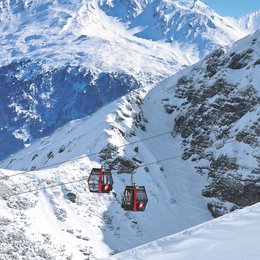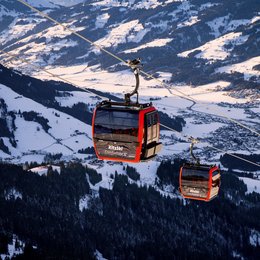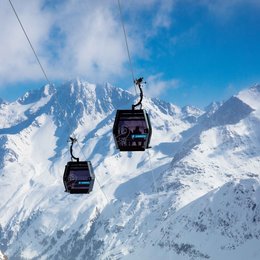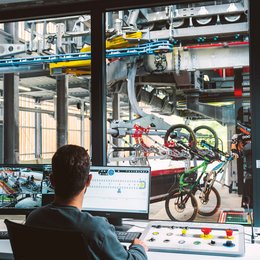In the Haltern-Lippramsdorf and Marl region, about a one hour drive north-west of Dortmund, Bunte is currently building levees along the River Lippe – the longest river in Westphalia – on behalf of the Lippeverband public water board. LEITNER ropeways recently installed an AGUDIO Flyingbelt there to transport roughly 500 tons of building material per hour.
New form of transport technology

Construction work is currently underway to build new flood protection levees along the River Lippe. As material had to be transported across the Lippe, a new form of transport technology was chosen. The AGUDIO Flyingbelt spans the river and transports the building materials efficiently. The system is supported on just two 20 meter towers on land, suspending the 80 centimeter-wide conveyor belt freely over the river. The soil material required to build the levee is delivered by ship via the Wesel-Datteln Canal and then transported a short distance to the Flyingbelt in construction vehicles. From there, it ‘floats’ to the northern bank of the Lippe, where it is processed. This method allows 500 tons of material to be transported 490 meters through the air per hour, avoiding 20 truck trips in the same period, which greatly reduces the levee construction project’s environmental impact and frees up the public roads.
Rapid, cost-effective and efficient technology
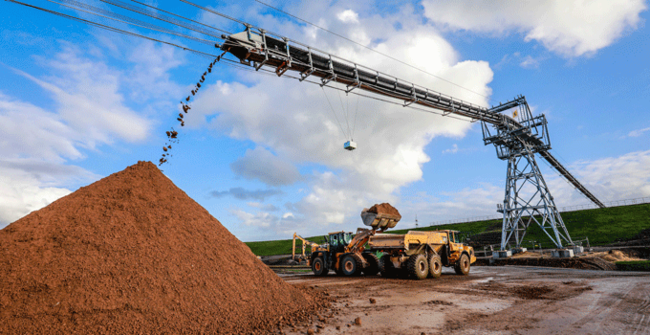
The flood protection project on the Lippe is another prime example of the outstanding strengths of cable-propelled material transport systems. The Flyingbelt is an innovative transport system that combines the advantages of modern conveyor belts and ropeways, as the material is simply flown over every obstacle. The transport solution developed and patented by LEITNER ropeways is therefore particularly suitable for difficult-to-access terrain, bypassing rivers and valleys and for long routes, or routes that would be extremely costly to serve with conventional means of transport. The Flyingbelt is suitable for all materials that can be transported on a ground-based conveyor belt, i.e. for coal, minerals, grain or bulk materials in general. Another advantage of the sophisticated design is the spot loading due to the minimal ground surface contact of the system. That minimizes the environmental impact compared with conventional ground-based material transport. It is easy to install and therefore both quick and cost-effective. The Flyingbelt was built in just five months and is to remain in operation until the end of 2023.
Other AGUDIO Flyingbelts have been built in Pouzols (FR), Genoa (IT) and in Barroso, Brazil, for example, where the longest Flyingbelt to date (7.2 km) is in use.
